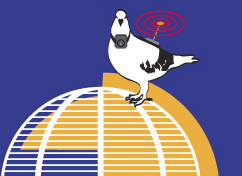George Legrady, Angus Forbes, Zachary Davis, Nicole Starosielski
Former title: Global Collaborative Visual Mapping Archive (GCVMA)
Cell Tango consists of a dynamically growing archive of cell phone transmitted images with metadata contributed by participants from anywhere within the reach of cellular transmission and reception in the world. The project’s aim is to heighlight individual to community, or local to global participation through cellphone transmission technology. The community of participants create a visual archive of images without spatial-geographical boundaries, submitting contributions from the private space of their living room, to the public space of Times Square, to any wilderness area that may have cellular transmission.
Reception
The received images are to be visualized within a virtual 3D architectural structure, their organization based on a number of metadata criteria such as cellphones' numbers (original contract locations), participants' contributed keywords, image titles and other. The images are to be viewed projected large scale within a public space onto a spherical surface, or some other form of 3D spatialization with interaction through wireless devices, and locally on 3D computer screens with mouse interaction to retrieve metadata or request re-organization, and accessible on the internet.
Research Developments
Research addresses methods of wireless cellular technological telecommunications devices, methods of data assembly such as self-organizing, neural-net, networks models, swarm intelligence algorithms, and the visual interface by which the images and their data are to be accessed and interacted with.
Production Details consist of the 3 sections
1. Reception and Storage of cellphone transmission through open source and proprietary software (Linux environment + MMSC Wireless technology )
2. Organization of incoming data (SQL for images and their metadata)
3. Visualization and interaction (3D projection and public interaction to reorganize data)
Artistic Precedents
GCVMA follows in the footsteps of “Pockets Full of Memories” (PFOM) and “Making Visible the Invisible” (MVI) for the Seattle Public Library. GCVMA is a wireless version of PFOM. Whereas PFOM required the public to visit the museum to contribute an object and data, GCVMA can receive its data from anywhere. MVI’s emphasis is on data analysis and its visualization and GCVMA will use methods learned from its data analysis. GCVMA ‘s contribution will be in spatializing the data into a 3D virtual environment.
Statistics and the Algorithmic Image
Currrently I am focusing on database collection and statistical analysis of cultural information as a means to consider how computation can provide a descriptive cultural perspective. In contrast to the Information Science specialist, my intention is to go beyond informational illustration through aesthetic framing, with the intent to reveal the formal, structural forces by which statistical data becomes information.
For instance, “Pockets Full of Memories”, an installation commissioned in 2001 by the Centre Pompidou Museum of Modern Art , Paris consists of the public contributing data (an image of an object and semantic descriptors) to a database whose data get organized by a neural-net based self-organizing mapping algorithm. The algorithm basically looks at all the data and organizes them within a 2D space so that every object is surrounded by others of similar semantic attributes with order achieved at the local and global state.
“Making Visible the Invisible” is a permanent commission for the new Seattle Public Library, designed by the architect Rem Koolhaas. The project consists of visually mapping on a daily basis changes in what the public is reading, to be presented on 6 horizontally positioned plasma screens in the main technology research room called the “Mixing Chamber”.
Team:
George Legrady
Director, Interaction Visualization Lab
Professor, Media Arts & Technology, UC Santa Barbara
(Artistic Concept, Visualization)
Angus Forbes
Doctoral student, Media Arts & Technology, UC Santa Barbara
(Artist/Engineer, Project Manager & Development, System Integration)
Zachary Davis
M.Sc, Media Arts & Technology, UC Santa Barbara
(Engineer, Database, Interactivity)
Nicole Starosielski
Doctoral student, Film Studies, UC Santa Barbara
(Cultural Theory, Narrative Development)
URLs
Pockets Full of Memories documentation
http://www.mat.ucsb.edu/~g.legrady/glWeb/Projects/pfom2/pfom2.html
Seattle Public Library Documentation
http://www.mat.ucsb.edu/~g.legrady/glWeb/Projects/spl/spl.html
Foundation Langlois archive of Legrady analogue to Digital Projects
http://www.fondation-langlois.org/legrady
|
